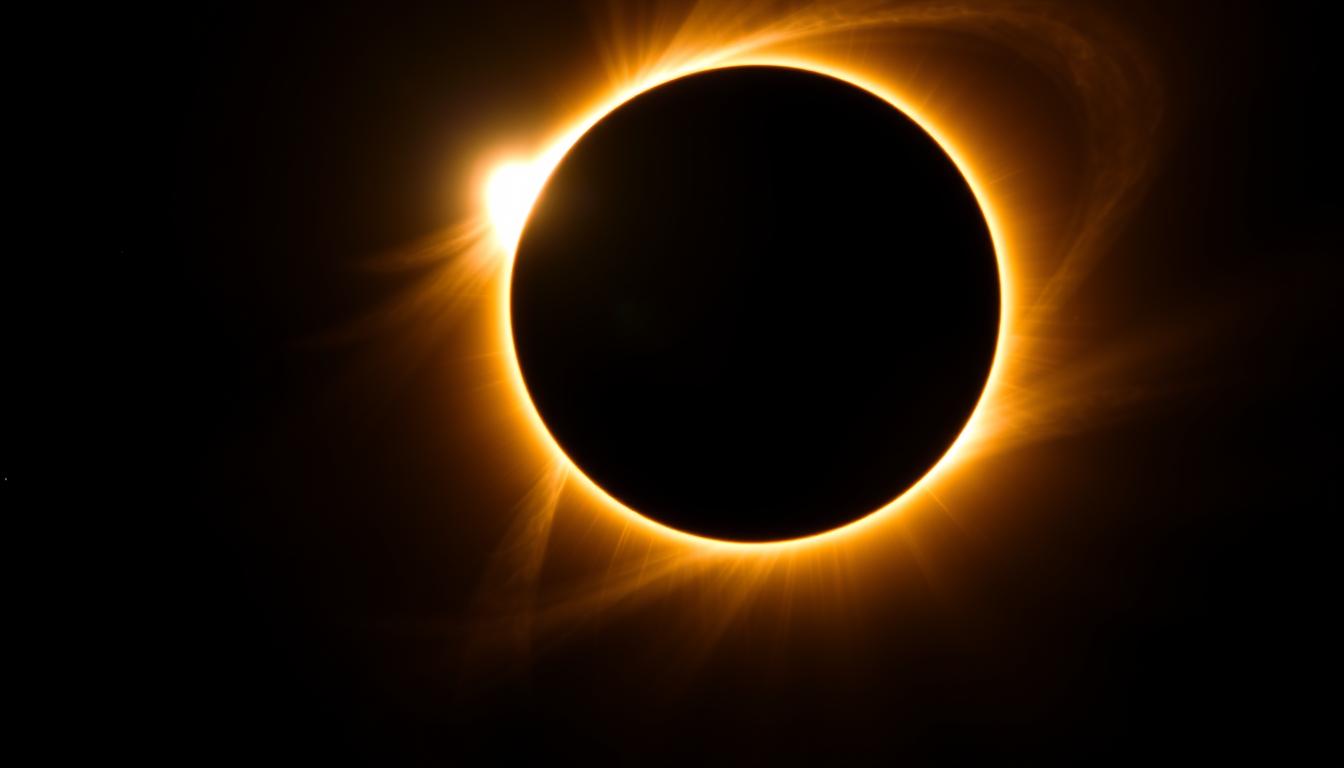As the sky darkened over North America during the April 2024 total solar eclipse, millions of travelers stood in awe, witnessing one of nature’s most spectacular displays. This wasn’t just a random gathering—it represented a growing travel trend known as “natural phenomena tourism,” where adventurers plan entire trips around Earth’s most extraordinary events.
From the ethereal dance of the Northern Lights to the thunderous migration of wildebeest across African plains, these fleeting moments offer something increasingly rare in our digital age: genuine wonder. Research shows that experiencing awe in nature reduces stress, enhances well-being, and creates lasting memories that standard sightseeing simply can’t match.
In this guide, we’ll explore how to plan unforgettable journeys centered around three categories of natural phenomena: celestial events like solar eclipses, geological wonders such as volcanic eruptions, and the rhythmic movements of animal migrations. We’ll cover timing, locations, safety considerations, and practical planning tips to help you witness Earth’s most magnificent spectacles.
The 2024 Great North American Eclipse drew millions of travelers seeking to witness this rare celestial event
Solar Eclipses: Chasing the Moon’s Shadow
Few natural phenomena create the sense of cosmic connection that comes from watching the moon perfectly align with the sun, turning day to night in a matter of minutes. Solar eclipses represent one of the most predictable yet still rare natural events worth planning an entire trip around.
Upcoming Eclipse Opportunities (2024-2026)
| Date | Type | Visibility | Duration of Totality | Best Viewing Locations |
| October 2, 2024 | Annular | South America, Pacific | 7m 25s (annularity) | Chile, Argentina |
| February 17, 2026 | Annular | Antarctica, South America | 2m 20s (annularity) | Argentina, Chile |
| August 12, 2026 | Total | Arctic, Greenland, Iceland, Spain | 2m 18s | Iceland, Spain |
Eclipse Viewing Safety
Important: Never look directly at the sun during partial eclipse phases. Only during the brief moments of totality (when the sun is completely covered) is it safe to view with the naked eye.
Essential Eclipse Viewing Equipment:
- ISO-certified solar viewing glasses
- Solar filters for cameras and telescopes
- Pinhole projector (DIY alternative)
- Weather-appropriate clothing (eclipses can cause temperature drops)
Eclipse Photography Tips:
- Use a sturdy tripod to minimize camera shake
- Bring a telephoto lens (at least 300mm) for detailed corona shots
- Practice your settings before the eclipse begins
- Consider using an automated timer to avoid missing the moment
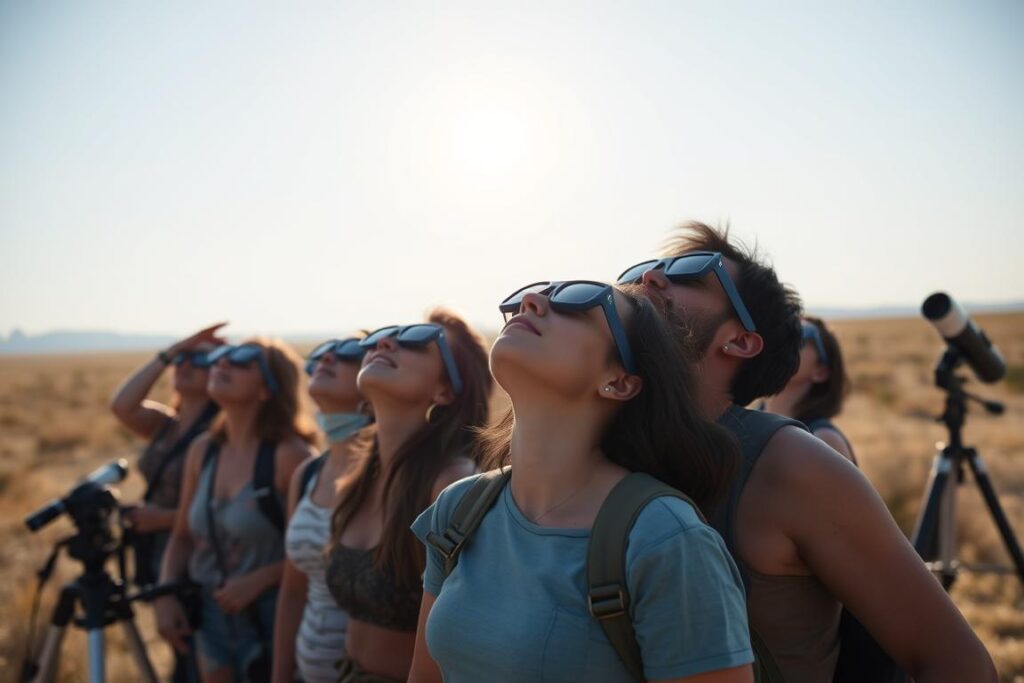
Proper eye protection is essential when viewing solar eclipses
Planning Your Eclipse Trip
Eclipse tourism creates significant demand in viewing areas, often in locations not accustomed to large tourist influxes. The 2024 North American eclipse saw accommodations booked years in advance, with prices increasing dramatically as the date approached.
“For the best eclipse experience, aim for locations with historically clear weather patterns and plan to arrive at least 2-3 days before the event to account for travel delays and to scout viewing locations.”
Never Miss Another Eclipse
Join our newsletter for alerts about upcoming celestial events, expert viewing tips, and exclusive travel packages to prime eclipse viewing locations.
Volcanic Eruptions: Earth’s Fiery Displays
While solar eclipses offer celestial wonder, volcanic eruptions showcase our planet’s raw geological power. Unlike eclipses, eruptions are less predictable but often provide longer viewing windows, making them accessible to travelers with flexible itineraries.
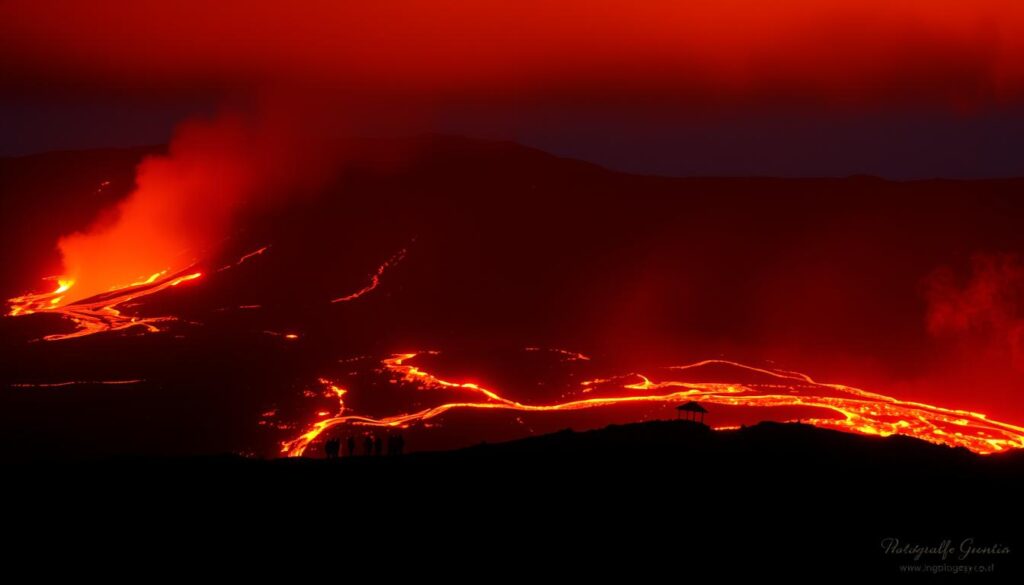
Iceland’s Fagradalsfjall volcano eruption attracted thousands of visitors in 2021
Safest Active Volcanoes for Tourism
Kīlauea, Hawaii
Hawaii’s most active volcano offers relatively safe viewing opportunities through Hawaii Volcanoes National Park. When active, its effusive eruptions create spectacular lava flows that can sometimes be viewed from designated areas.
Best time to visit: Year-round, but check current activity levels
Mount Etna, Sicily
Europe’s most active volcano is also one of its most monitored. Guided tours take visitors to safe viewing areas, while cable cars provide access to higher elevations when conditions permit.
Best time to visit: April to October for best weather conditions
Fagradalsfjall, Iceland
Iceland’s newest eruption site gained fame in 2021 when its accessible location and relatively gentle eruption style allowed thousands of visitors to witness flowing lava safely.
Best time to visit: During active periods, summer for better weather
Safety Considerations for Volcano Tourism
Safety first: Always consult local authorities before visiting active volcanic zones. Conditions can change rapidly, and areas deemed safe one day may become dangerous the next.
Essential Safety Guidelines:
- Only visit with certified guides familiar with current conditions
- Respect all barriers and warning signs
- Carry appropriate protective gear (respirator masks for volcanic gases)
- Maintain awareness of evacuation routes
- Check weather forecasts as wind direction affects gas dispersal
Health Considerations:
- Volcanic gases can exacerbate respiratory conditions
- Wear sturdy hiking boots for sharp volcanic terrain
- Bring plenty of water as volcanic areas are often remote
- Use sun protection as volcanic landscapes offer little shade
- Consider travel insurance with emergency evacuation coverage
Guided Tour Recommendations
For most travelers, guided tours offer the safest and most informative way to experience volcanic activity. Professional guides monitor conditions continuously and provide geological context that enhances the experience.
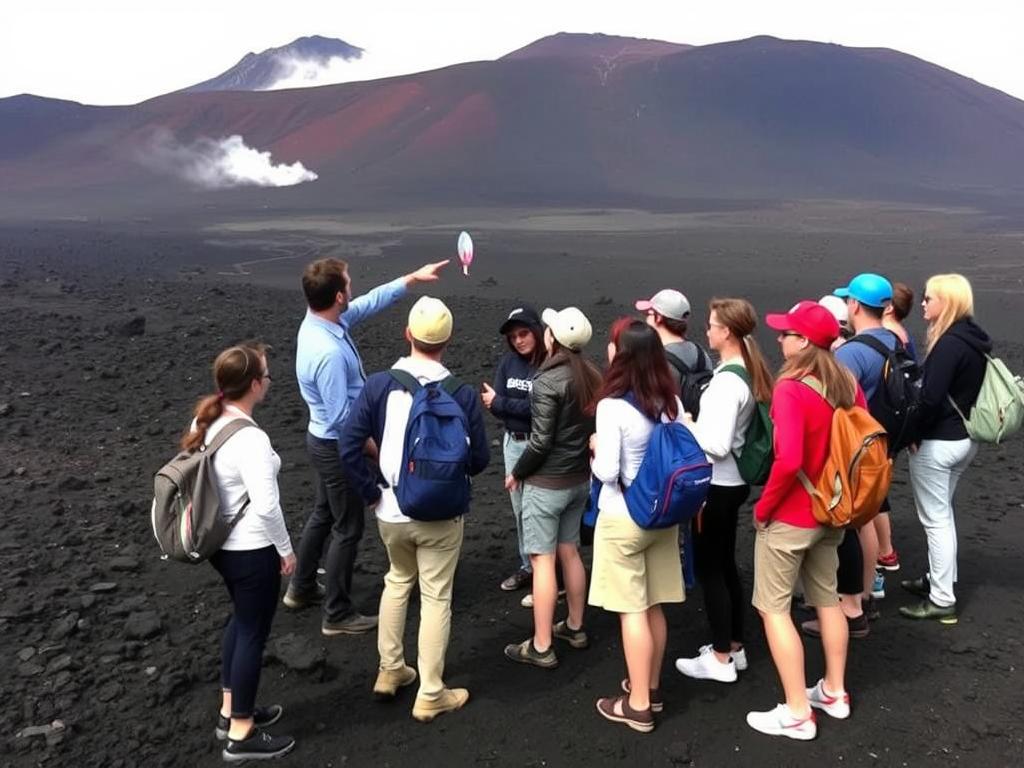
Professional guides provide safe access and educational context for volcano tourism
Environmental Impact Note: Volcanic tourism can damage fragile ecosystems forming on new lava flows. Stay on designated paths, pack out all trash, and consider supporting conservation efforts in volcanic regions you visit.
Experience Earth’s Geological Wonders
Discover upcoming guided volcano tours with expert geologists who can help you safely witness these powerful natural phenomena.
Animal Migrations: Nature’s Great Journeys
While celestial and geological events captivate with their drama, animal migrations offer a different kind of natural phenomena tourism—one filled with life, movement, and the rhythms of nature’s cycles. These biological spectacles connect us to Earth’s intricate ecosystems and the ancient patterns that have shaped life on our planet.

The Great Migration in the Serengeti is one of the world’s most spectacular wildlife events
Top Migration Experiences
Great Wildebeest Migration
Over 1.5 million wildebeest, accompanied by hundreds of thousands of zebras and gazelles, make a circular journey through Tanzania’s Serengeti and Kenya’s Maasai Mara in search of fresh grazing and water.
Best viewing time: July-October (Mara River crossings)
Monarch Butterfly Migration
Millions of monarch butterflies travel up to 3,000 miles from the United States and Canada to central Mexico’s oyamel fir forests, creating spectacular orange clusters on trees during their winter hibernation.
Best viewing time: January-March in Mexico
Sardine Run
South Africa’s annual sardine run sees billions of sardines migrate along the coast, creating a feeding frenzy that attracts dolphins, sharks, whales, and seabirds in a spectacular marine event.
Best viewing time: June-July along South Africa’s east coast
Seasonal Migration Calendar
| Migration Event | Location | Peak Season | Viewing Difficulty | Booking Lead Time |
| Wildebeest Migration (River Crossings) | Kenya/Tanzania | July-October | Moderate | 12+ months |
| Monarch Butterflies | Mexico | January-March | Easy | 3-6 months |
| Humpback Whale Migration | Australia East Coast | June-November | Easy | 1-3 months |
| Arctic Tern Migration | Arctic/Antarctic | May-August (Arctic) | Difficult | 6-12 months |
| Red Crab Migration | Christmas Island | October-December | Moderate | 6-9 months |

Millions of monarch butterflies create orange blankets on trees in central Mexico’s forests
Ethical Wildlife Viewing
Responsible Tourism Tip: Choose tour operators that follow ethical wildlife viewing practices and contribute to conservation efforts. The best wildlife experiences maintain appropriate distances and minimize disruption to animal behavior.
Ethical Viewing Guidelines:
- Maintain recommended viewing distances
- Never feed or attempt to touch wild animals
- Keep noise levels low to avoid disturbing wildlife
- Stay on designated paths and viewing areas
- Follow all guide instructions regarding wildlife interactions
Supporting Conservation:
- Choose operators that contribute to local conservation
- Consider adding a donation to wildlife organizations
- Share educational content rather than just spectacular photos
- Support protected areas through entrance fees
- Learn about threats facing migratory species
Witness Earth’s Great Migrations
Join expert-led small group tours to witness the world’s most spectacular animal migrations while supporting wildlife conservation efforts.
Planning Your Natural Phenomena Trip
Natural phenomena tourism requires more careful planning than conventional travel. The unpredictable nature of some events, combined with their often remote locations and specific timing windows, means travelers need to be both well-prepared and flexible.

Careful planning with attention to timing is essential for successful natural phenomena tourism
Booking Timelines
“For high-demand natural events like total solar eclipses or the Serengeti migration river crossings, I recommend booking accommodations 12-18 months in advance. The best locations sell out quickly, and prices increase dramatically as the event approaches.”
| Phenomenon Type | Recommended Booking Lead Time | Flexibility Required | Typical Price Premium |
| Total Solar Eclipse | 12-24 months | Low (exact date known) | 200-300% |
| Northern Lights | 6-12 months | High (weather dependent) | 50-100% |
| Volcanic Activity | 1-3 months | Very High (unpredictable) | Varies widely |
| Wildlife Migrations | 9-12 months | Medium (seasonal window) | 30-100% |
Budgeting for Natural Phenomena Travel
Cost-Saving Strategies:
- Book accommodations far from the main viewing area and plan to drive in for the event
- Consider camping options where appropriate and safe
- Travel during shoulder seasons for migration events
- Join group tours to share costs of specialized guides
- Look for less famous but equally impressive alternatives (e.g., partial eclipses, smaller migrations)
Worth the Splurge:
- Expert guides who can maximize viewing opportunities
- Quality viewing equipment (binoculars, solar filters)
- Travel insurance with trip cancellation coverage
- Flexible accommodations that allow date changes
- Private viewing areas away from crowds
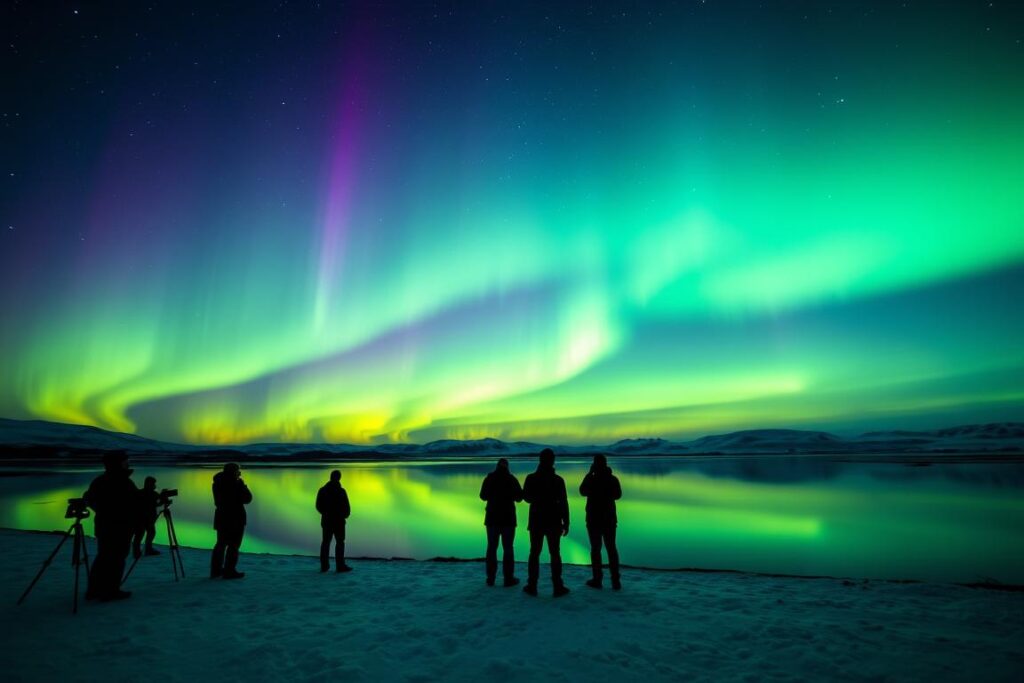
The Northern Lights in Iceland represent one of the most sought-after natural phenomena experiences
Travel Insurance Considerations
Natural phenomena tourism often involves non-refundable bookings, remote locations, and weather-dependent activities—making comprehensive travel insurance particularly important.
Insurance Tip: Look for policies that specifically cover trip cancellation due to weather conditions that prevent viewing the phenomenon you’re traveling to see. Standard policies may not cover cancellations if the event itself doesn’t occur as expected.
Never Miss a Natural Wonder
Subscribe to our newsletter for alerts about upcoming natural phenomena, expert planning guides, and exclusive travel packages to witness Earth’s most extraordinary events.
Embracing the Extraordinary
Natural phenomena tourism offers more than just spectacular views—it provides profound connections to our planet’s most awe-inspiring processes. Whether witnessing the cosmic dance of a solar eclipse, feeling the earth’s power through volcanic activity, or observing the ancient rhythms of animal migrations, these experiences remind us of our place within nature’s grand systems.
As you plan your own journey to witness these wonders, remember that the unpredictability is part of the adventure. Even with perfect planning, nature operates on its own terms. A willingness to embrace uncertainty, combined with thorough preparation, creates the conditions for truly transformative travel experiences.
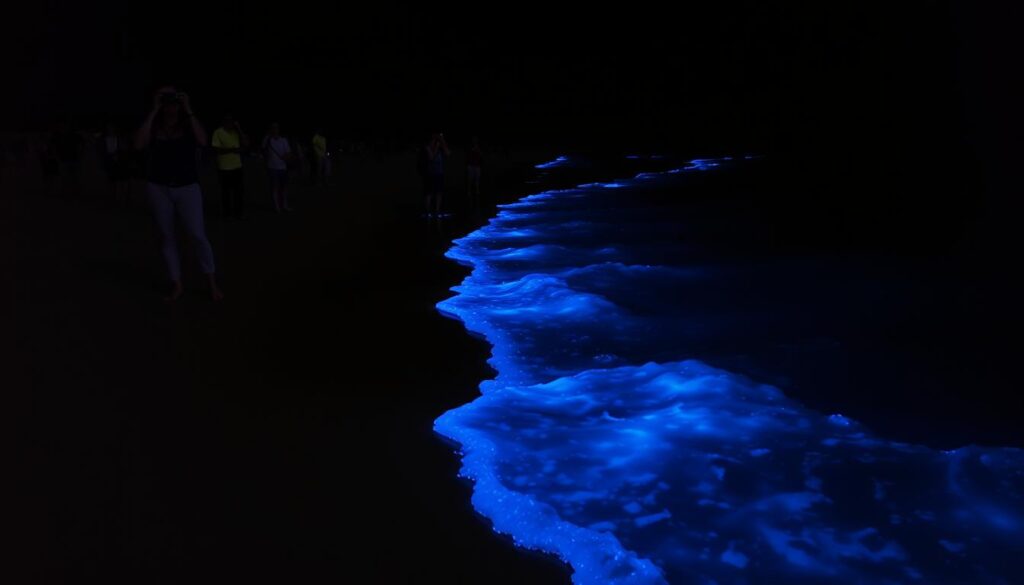
Bioluminescent plankton create magical blue glows along certain coastlines, offering another spectacular natural phenomena experience
Most importantly, approach these experiences with respect for both the natural world and local communities. The best natural phenomena tourism leaves minimal impact on the environment while maximizing positive contributions to conservation efforts and local economies.
“We travel to witness Earth’s masterpieces – the creations of time, weather, light, and gravity that no human could ever replicate. In doing so, we become not just observers but participants in the ongoing story of our living planet.”
Start Your Natural Phenomena Journey
Join our community of natural phenomena enthusiasts to receive exclusive guides, event calendars, and early access to specialized tours for witnessing Earth’s most extraordinary events.
